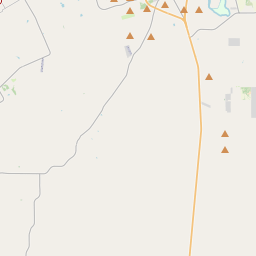Concrete Cemetery
Historical marker location:












Encompassing 6.814 acres of land, Concrete Cemetery includes within its borders burials for both Anglo and Hispanic citizens of the La Vernia and New Berlin communities. The area surrounding the cemetery was called Concrete (formerly Bethesda). Local farmer and rancher James Henry Newton, who brought his family here from Mississippi about 1851-52, designated a portion of his property as a burial ground when his brother Joel died in 1856. The oldest recorded burial, that of Maria Madden Dial in 1855, indicates previous use as a graveyard. The community and cemetery were named for an 1858 concrete building used as a school, church and Masonic Hall.
James Newton officially deeded a two-acre tract of land here in 1875 for use as a community cemetery. The first documented burial in the adjacent Hispanic section is that of Paulita Salazar in 1913.
Additional donations of land were made by the descendants of J. G. and Jennie Scull. The graveyard contains a diverse collection of gravestones reflecting the historic communities it serves. Among the more than 800 burials here are pioneer settlers, infants and children, veterans and members of fraternal organizations. The site continues to serve the area. (1997)
As one of the most visible programs of the Texas Historical Commission (THC), historical markers commemorate diverse topics in Texas history, including: the history and architecture of houses, commercial and public buildings, religious congregations, and military sites; events that changed the course of local and state history; and individuals who have made lasting contributions to the state, community organizations, and businesses.
In the late 19th century, Texas became known for its cattle drives, in which cowboys would move herds of cattle from Texas to railheads in Kansas and other northern states. The cattle drives were dangerous and difficult work, but they played a key role in the development of the American cattle industry.
The area came under Spanish rule in the 18th century when Spanish explorers and missionaries arrived. In 1756, the Spanish established the Mission Nuestra Señora de Guadalupe de los Nacogdoches near present-day Seguin, marking the beginning of European settlement in the area. The mission was intended to convert and provide shelter for Native Americans, but it was eventually abandoned due to conflicts with local tribes.
During the turbulent years of the 19th century, Guadalupe County witnessed significant changes. In 1836, the Battle of the Alamo and the Texas Revolution prompted a wave of Anglo-American settlers to move into the area. The county was officially established in 1846, and soon after, it became an important center for agriculture, particularly cotton production.
The county's growth continued during the late 19th and early 20th centuries. The arrival of the railroad in the 1870s brought increased economic opportunities and facilitated trade with other regions of the state. By the early 20th century, Guadalupe County had a thriving economy with industries such as agriculture, oil and gas, and manufacturing.
Today, Guadalupe County retains its agricultural heritage while also being home to a diverse mix of industries and communities. It offers a unique blend of rural charm, natural beauty, and a growing suburban area. With its rich historical background and vibrant present, Guadalupe County remains an essential part of the Lone Star State.
Guadalupe County Timeline
This timeline provides a condensed summary of the historical journey of Guadalupe County, Texas.
- 1838: Guadalupe County is established as a county in the Republic of Texas.
- 1846: Guadalupe County becomes a part of the state of Texas after Texas is annexed by the United States.
- 1848: The county seat of Guadalupe County is established in Seguin.
- 1861-1865: Guadalupe County is greatly affected by the American Civil War.
- 1876: The courthouse in Seguin is destroyed by fire but is rebuilt the following year.
- Late 1800s: The county experiences significant growth with the introduction of the railroad and the development of agriculture and industry.
- Early 1900s: Guadalupe County experiences further growth with the discovery of oil and gas in the area.
- 1930s-1940s: Guadalupe County suffers from the effects of the Great Depression and World War II.
- 1960s-1970s: The county experiences growth and development with the construction of Interstate 10 and the expansion of the petrochemical industry.
- 2000s: Guadalupe County continues to grow and attract new residents and businesses.